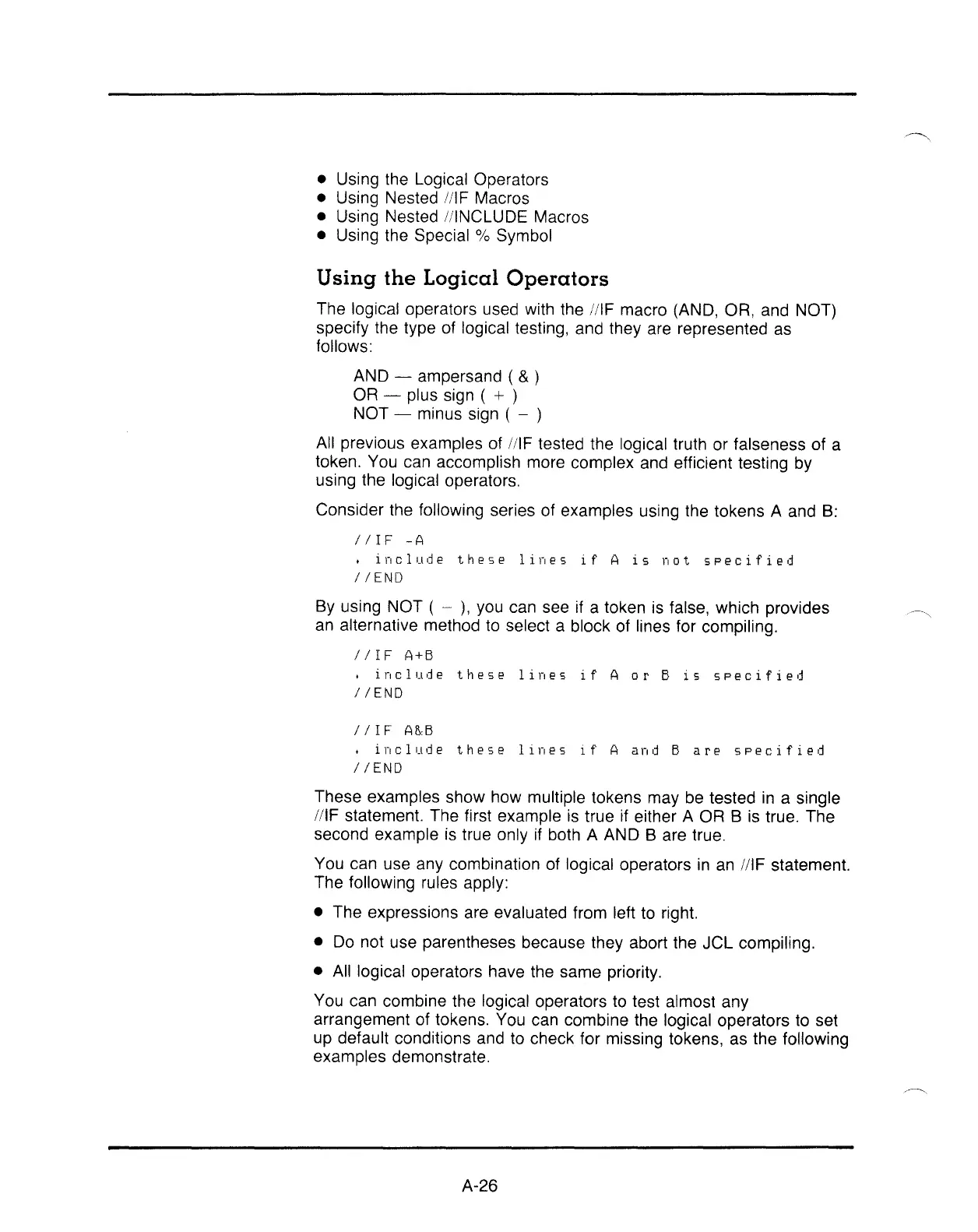• Using the Logical Operators
• Using Nested
IIIF Macros
• Using Nested IIINCLUDE Macros
• Using the Special
% Symbol
U
sing
the
Logical
Operators
The logical operators used with the /IIF macro (AND, OR, and NOT)
specify the type of logical testing, and they are represented as
follows:
AND - ampersand (
& )
OR - plus sign ( + )
NOT - minus sign ( - )
All previous examples of
IIIF tested the logical truth or falseness of a
token. You can accomplish more complex and efficient testing by
using the logical operators.
Consider the following series of examples using the tokens A and
B:
IIIF
-A
•
include
these
lines
if
A
is
not
specified
IIEND
By using NOT ( -
),
you can see
if
a token is false, which provides
an alternative method to select a block of lines for compiling.
IIIF
A+B
•
include
these
lines
if
A
or
B
is
specified
IIEND
IIIF
A&B
•
include
these
lines
if
A
and
B
are
specified
IIEND
These examples show how multiple tokens may be tested
in
a single
IIIF statement. The first example is true
if
either A OR B is true. The
second example is true only
if
both A AND B are true.
You can use any combination of logical operators
in
an
IIIF statement.
The following rules apply:
• The expressions are evaluated from left to right.
• Do not use parentheses because they abort the JCL compiling.
• All logical operators have the same priority.
You can combine the logical operators to test almost any
arrangement of tokens. You can combine the logical operators to set
up default conditions and to check for missing tokens, as the following
examples demonstrate.
A-26

